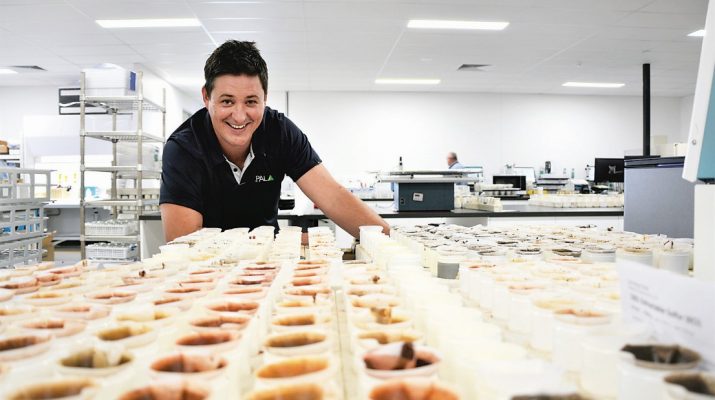With seeding fast approaching, grain growers are encouraged to undertake soil testing before the 2019 growing season to help them make more informed fertiliser decisions and save costs.
Below-average rainfall and below-average yields in many parts of southern Australia in 2018 will have resulted in less nutrients being taken out of the soil through grain.
However, Australian Precision Ag Laboratory managing director Dr Ryan Walker said it was important growers and their agronomists quantify this with soil tests to ensure they were getting the best value from their fertiliser investment.
“While seeding is just around the corner, it’s not too late for growers to soil test,” Dr Walker said.
“Soil testing each year helps to build a better profile of knowledge so growers can understand what is happening with the nutrient status of their soils.
“This will help them to make informed decisions for soil management and fertiliser applications to maximise yields and profits.”
Dr Walker said soil testing ensured growers that soil nutrients were not being ‘mined’ but rather replacement rates were being added to build soil health and fertility.
“Good, fertile soil drives agricultural production and a detailed understanding is the first step towards realising its full potential,” he said.
“Soil analysis is fundamental to understanding soil. This provides growers and agronomists with a detailed analysis to form the basis for specific soil fertility and/or amelioration required to correct physical or chemical soil imbalances.”
Surveys conducted by Grains Research and Development Corporation indicate soil testing rates have experienced a 50 percent reduction compared to nine years ago.
GRDC’s farm practices surveys show that in 2008 around 40 percent of cropped area in the southern region of South Australia, Victoria and Tasmania was tested for nutrient status, while in 2016 this was less than 15 percent.
To help improve these numbers, APAL is collaborating on a GRDC-funded project with a number of partners with the aim to improve nutrient management best practice through the increased use of soil testing.
“Besides soil nutrient status, soil testing can also estimate how much water can be stored in the soil, if there are any subsoil constraints or if there is potential for soil-borne diseases to occur,” Dr Walker said.

